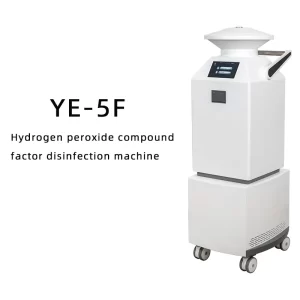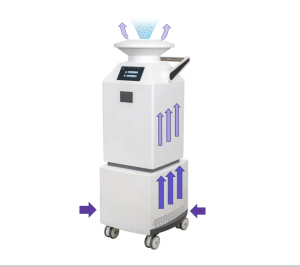In the realm of infectious agents, pneumonia caused by Mycoplasma pneumoniae, a bacterium-like microorganism, raises a unique set of challenges. Unlike typical bacteria with cell walls or viruses, Mycoplasma pneumoniae occupies a middle ground, being the smallest known self-sustaining microbe in nature.
Understanding Mycoplasma pneumoniae
Mycoplasma pneumoniae is notably distinct for its lack of a cell wall, rendering it naturally resistant to antibiotics that target cell walls, such as penicillin and cephalosporins. This peculiarity underscores the importance of alternative treatment approaches for Mycoplasma pneumoniae infections.

Prevalence and Susceptibility
This bacterium-like organism is known to cause infections throughout the year, with children being particularly susceptible. Outbreaks often occur in settings where individuals congregate, such as daycare centers and primary schools.
Studies have shown that the infection rate among children ranges from 0% to 4.25%, with a significant number of carriers remaining asymptomatic. Mycoplasma pneumoniae pneumonia (MPP) accounts for approximately 10-40% of community-acquired pneumonia cases in children and adolescents. While it is more commonly observed in children aged five and above, it can also affect those under five.
Dispelling Myths: Mycoplasma Infections
It's important to clarify the relationship between Mycoplasma and pneumonia:
Mycoplasma is the Pathogen: Mycoplasma pneumoniae is the causative pathogen.
Mycoplasma Infections: Mycoplasma infections encompass a range of conditions. They primarily affect the respiratory tract, causing pharyngitis, bronchitis, pneumonia, and can also involve other organs and systems like the skin, nervous system, cardiovascular system, digestive system, and hematological system.
Diagnosing Mycoplasma Pneumonia: The presence of Mycoplasma pneumoniae must be confirmed through clinical diagnosis to classify a case as Mycoplasma pneumonia.
Transmission and Contagion
Mycoplasma pneumoniae is highly contagious. Infected individuals and carriers serve as sources of transmission. The bacterium can remain latent for extended periods (1-3 weeks), during which it remains infectious.
The primary mode of transmission is through respiratory droplets, which are released during coughing, sneezing, or nasal discharge. Additionally, fecal-oral transmission and aerosol transmission can occur, albeit with lower probabilities. Indirect transmission through contact with contaminated items like clothing or towels is also possible.

Recognizing Symptoms and Seeking Medical Attention
In most cases, Mycoplasma infections may manifest with no symptoms or exhibit mild upper respiratory symptoms like coughing, fever, and sore throat. However, a minority of cases progress to pneumonia, characterized by fever, severe coughing, headache, runny nose, sore throat, and earache.
High fever, especially persistent high fever, may indicate a severe condition. Coughing can be intense, resembling whooping cough in some instances. In young infants, wheezing may predominate. Early medical attention is crucial for cases with prolonged fever and severe coughing.
Preventing Mycoplasma Infections
Currently, there is no vaccine available for the prevention of Mycoplasma pneumoniae infections. Thus, adopting good personal hygiene practices is of paramount importance:
Ventilation: Adequate indoor ventilation, especially during peak seasons, can reduce the risk of transmission.
Hand Hygiene: Thorough handwashing upon returning home from public spaces is essential.
Schools and Daycares: These institutions should focus on indoor air quality and implement home rest for affected children until symptoms subside.
Mycoplasma pneumoniae presents a unique challenge in the realm of infectious agents. Understanding its distinct characteristics, modes of transmission, and symptoms is crucial for prompt diagnosis and treatment. Equally important is the adoption of personal hygiene practices and environmental measures to prevent the spread of this bacterium-like microorganism.
Similarly, you can also use YE-5F disinfection machine to improve disinfection efficiency and create a safer environment

- In the relentless pursuit of a safer and cleaner environment, the YE-5F Disinfection Machine, equipped with its unique Five-in-One Disinfection Factors, emerges as a remarkable solution.
- Passive Disinfection (Coexistence of Humans and Machines)
- Light (Ultraviolet Irradiation): Harnessing the power of ultraviolet (UV) rays, it effectively eliminates harmful microorganisms.
- Filter Adsorption (Coarse Filtration Device): The machine incorporates a robust filtration system that captures particulate matter and pollutants, ensuring the air is clean and pure.
- Capture (Photocatalyst): Employing advanced photocatalysis technology, it captures and neutralizes airborne contaminants, promoting a healthier indoor enviroion
- Gas (Ozone Gas): The active generation of ozone gas provides an additional layer of disinfection. Ozone is a potent oxidizing agent known for its ability to eliminate bacteria, viruses, and odors effectively.
- Liquid (Hydrogen Peroxide Solution): The machine dispenses a fine mist of hydrogen peroxide solution into the air. Hydrogen peroxide is renowned for its powerful disinfection properties, ensuring thorough sterilization.

The YE-5F Disinfection Machine integrates cutting-edge technology to deliver outstanding disinfection results. It actively generates hydrogen peroxide disinfection factors, dispersing them as a fine mist into the air. Simultaneously, the built-in UV chamber operates independently, providing an extra layer of disinfection. This dual-action approach guarantees comprehensive and efficient disinfection throughout your food processing facility.
By investing in the YE-5F Disinfection Machine, you are prioritizing the safety and health of your environment. Elevate your disinfection protocols to a new level of excellence, ensuring the utmost protection for your workforce and products.